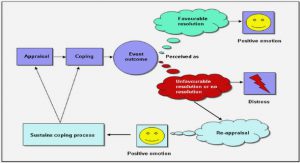Get Complete Project Material File(s) Now! »
Earth’s core
Earth’s interior structure
The Earth interior structure is mostly determined through seismological observations. The first quantitative model of the Earth’s interior was proposed by Wiechert (1897) leading to a large interest in seismological modeling of Earth’s deep interior. From these seismological models a layered structure of Earth’s interior can be inferred, with a thin crust at the surface that lies above a silicate mantle. The presence of an iron core below the mantle was first shown by Oldham (1906) and 30 years later Lehmann (1936) was the first to separate the iron core into a liquid outer core and a solid inner core. A schematic of the Earth interior, displaying the crust, mantle, outer core and inner core is shown in Figure 1.1 (left), where the layer depths are shown to scale and correspond to the values of the Preliminary Earth Model (Dziewonski and Anderson, 1981). This interior model is idealized, assuming radial symmetry and homogeneous layers. Some of the dynamics that occur are illustrated in Figure 1.1 (right). The mean radius of the Earth is RC 6370 km. At the surface the relatively small crust extends to a depth of up to only around 70 km. The largest volume and mass is taken by the silicate mantle, extending down to a depth of 2890 km. The mantle encloses the core of radius Rc 3480 km, with the solid inner core of radius Ri 1220 km within.
Properties of the liquid outer core
The liquid outer core predominantly consists of an iron-nickel alloy, with about 10% of lighter elements like oxygen, sulfur and silicon (e.g McDonough, 2003). The density of the outer core is about 1:09 104 kg m 2 (e.g. Olson, 2015), making it about twice as dense as the overlaying mantle. This gives it a total moment of inertia of Ic 9:14 1036 kg m2 (Gross, 2015). Since Earth rotates around its axis at rate of 7:27 10 5 rad s 1, the core’s angular momentum is Lc 6:64 1032 kg m2 s 1. The pressure in the outer core is O p1011q Pa and temperatures reach up to 4700 500 K (Olson, 2015). The kinematic viscosity of the fluid outer core is estimated to be O p10 6q m2 s 1 (Wijs et al., 1998). Since the core mostly consists of iron its electrical conductivity is large, even at the given pressure and temperature conditions. It has a value of approximately 1:55 106 Sm 1 inferred from density functional theory calculations (Pozzo et al., 2014).
Below the CMB and just above the inner core it has been suggested that stably stratified layers could be present, possibly having a large influence on waves within the core (e.g. Braginsky, 1993). However, these layers remain a challenge to be resolved by seismological observations (see Hardy and Wong, 2019, and references therein).
Geodynamo and convection in the outer core
The effects in a conducting fluid to constructively generate magnetic energy, leading to a self-sustained magnetic field, is known as dynamo theory. Originally put forward by Larmor (1919) and Elsasser (1946), dynamo theory now encompasses a large literature (e.g. textbooks by Moffatt, 1978; Roberts, 2015). Through the constructive twisting and shearing of magnetic field lines by fluid motions, a large scale magnetic field can be generated. Going into the details of dynamo theory is beyond the scope of this thesis and we refer the interested reader to a recent textbook by Moffatt and Dormy (2019) which gives an adequate introduction and review of the topic.
Without explaining the theory of dynamo action we can discuss a source of energy input that is needed to drive it. Due to a slow overturning of the mantle, heat can be transported efficiently out from the core (Schubert et al., 2001). This cooling is es-sential for thermal convection in the liquid outer core (convective motion in the core illustrated in Figure 1.1, right). However, thermal convection alone is insufficient to drive dynamo action in Earth’s core (Fearn and Loper, 1981; Pozzo et al., 2012). Compositional convection, through the release of light elements by inner core nucle-ation (Verhoogen, 1961), is today the widely accepted driver of the current Earth’s magnetic field generation (see Jones, 2015, for a detailed review). High resolution convective geodynamo simulations have shown remarkable resemblance to Earth’s magnetic field, despite operating at physical parameters different to those relevant for the Earth (Glatzmaiers and Roberts, 1995; Jones, 2000; Schaeffer et al., 2017).
Compositional convection relies on the presence of an inner core. However, the age of the solid inner core is still very much under debate, with estimates ranging between 700 Myr to 1.5 Gyr (Pozzo et al., 2012; Biggin et al., 2015; Labrosse, 2015). Evidence from palaeomagnetic samples suggests that the magnetic field has been operating for about 3.4 Gyr (Tarduno et al., 2010). More recent work has even suggested that the geodynamo has been operating for as long as 4.2 Gyr, only a few hundred million years after Earth’s formation and the moon forming giant impact (Tarduno et al., 2020). Another source of driving convection or turbulent motion in the liquid core prior to inner core nucleation is thus needed. Chemical convection through precipitation of light elements (especially Magnesium) from the mantle into the outer core has been suggested as a possible driver of convection (O’Rourke and Stevenson, 2016; Badro et al., 2018). Another proposed driver of dynamo action are turbulent motions triggered by orbital forcing (Malkus, 1968; Kerswell, 1996; Reddy et al., 2018), although it is unclear if it could have been efficient enough for the early geodynamo.
Core-mantle boundary topography
The CMB is likely not a perfect sphere. The overturning of the mantle causes uprising of lighter and hot material and downwelling of heavier and colder material near the CMB (see Bercovici, 2015, for a broad introduction to mantle dynamics). These uprising plumes and downwellings are assumed to pull and push on the CMB, leading to its deformation (Hager et al., 1985; Forte and Peltier, 1989; Forte et al., 1995). Seismic tomography maps of the CMB are able to resolve deflections of the CMB on lateral spatial scales of thousands of kilometers. These studies suggest that a peak-to-peak amplitude of the CMB topography can reach up to 3 km (Sze and van der Hilst, 2003; Koper et al., 2003). These figures of the topography amplitude seem to agree with recent geodynamic simulations of smaller length scale topography (Heyn et al., 2020). Whether these smaller length scales can be observed seismologically is an open question (Mancinelli and Shearer, 2016).
The large scale polar flattening of the CMB, caused by the rotation and tidal torques, has been estimated in terms of an ellipticity of 2:65 10 3, corresponding to a difference of about 9 km between polar and equatorial radius (Mathews et al., 2002). It is constrained by the influence of the so-called free core nutation (FCN) mode on the solid Earth’s nutation, a latitudinal wobble of the rotation axis (see also Dehant and Mathews, 2013). This polar flattening is certainly relevant for the nutation of Earth, but has no relevant influence on the axial topographic torque that is of interest here.
The equations governing flows in planetary cores
In this section a synopsis of the basic equations of a rotating, incompressible and conducting fluid is given. Most of the hydrodynamic equations are found in text-books (e.g Greenspan, 1968). For more detailed derivations of the hydrodynamic equations we refer the reader to Zhang and Liao (2017). The basics on the magneto-hydrodynamic (MHD) equations can be found in Roberts (1967) and Backus et al. (1996).
Fluid description in the rotating frame
The evolution of a fluid at a position r with a velocity u Br{Bt and density is described by the conservation of momentum u through the momentum equation and the conservation of mass through the continuity equation.
Table of contents :
1 Introduction
1.1 Overview
1.2 Earth’s core
1.2.1 Earth’s interior structure
1.2.2 Properties of the liquid outer core
1.2.3 Geodynamo and convection in the outer core
1.2.4 Core-mantle boundary topography
1.3 The equations governing flows in planetary cores
1.3.1 Fluid description in the rotating frame
1.3.2 Magnetohydrodynamic equations
1.3.3 Dimensional analysis
1.3.4 Reduced models in planetary fluid dynamics
1.4 Length-of-day variations and core-mantle interactions
1.4.1 Observed length-of-day variations
1.4.2 Torque balance
1.4.3 Core-mantle coupling mechanisms
1.5 Geomagnetic field changes and core flow inversions
2 Quasi-geostrophic models
2.1 Small slope approximation
2.2 Quasi-geostrophic approximation
2.3 Vorticity equation
2.4 Galerkin approach
2.5 Lagrangian formalism
2.6 Columnar magnetic field
2.7 Non-axisymmetric core volume
2.7.1 Cartesian basis in the ellipsoid
2.7.2 Non-orthogonal coordinate systems
3 Modes in a planetary core
3.1 Inertial modes
3.2 Quasi-geostrophic inertial modes
3.3 Magneto-Coriolis modes
3.4 Taylor’s constraint and torsional Alfvén modes
3.5 Excitation and presence of hydromagnetic modes in Earth’s core
3.6 Numerical calculation of modes
3.6.1 Solving the generalized eigen problem
3.6.2 Code examples
4 Torsional Alfvén modes in a non-axisymmetric domain
4.1 Pressure torque of torsional Alfvén modes acting on an ellipsoidal mantle
4.2 Pressure in a quasi-geostrophic model
4.3 Towards more complex geometries using non-orthogonal coordinates
5 On quasi-geostrophic Magneto-Coriolis modes
5.1 Fast quasi-geostrophic Magneto-Coriolis modes in the Earth’s core
5.2 Diffusive Magneto-Coriolis modes
5.3 Towards an insulating magnetic field basis in the ellipsoid
6 Conclusions & Perspectives





